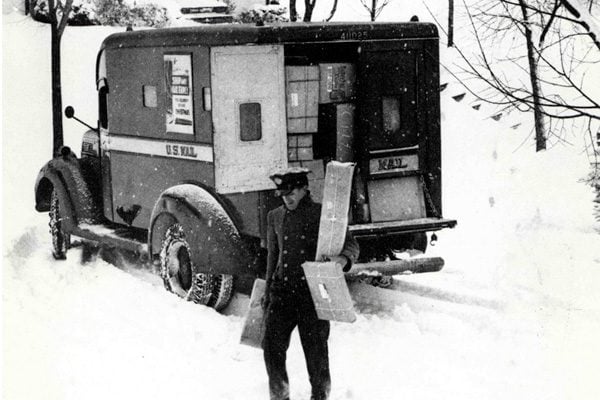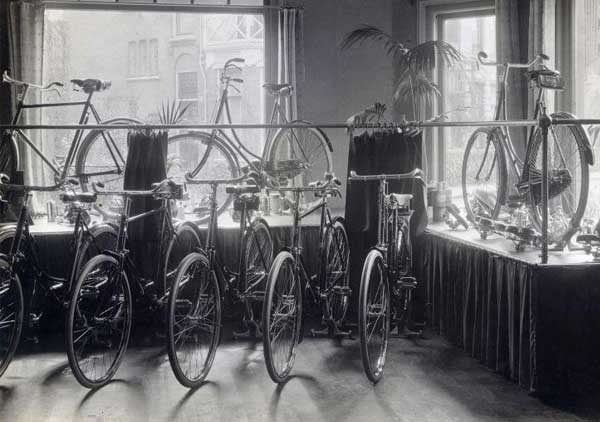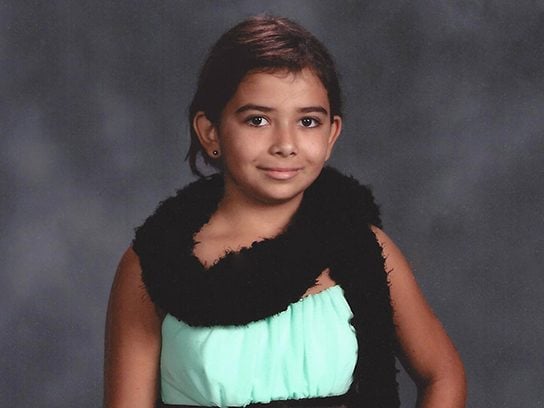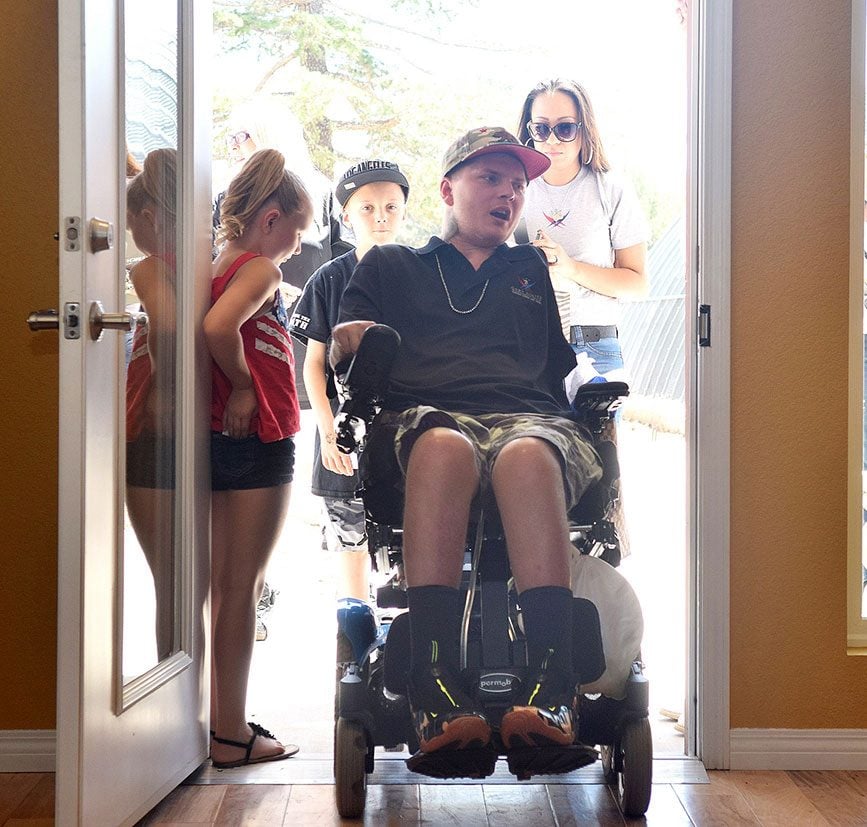Dogtooth Peak, in Central California’s Sierra National Forest, towers 10,300 feet above sea level, jutting from the surrounding rock like a hand reaching for the sky. On a Thursday morning last July, three friends eyed the peak and began the ascent from the alpine lakeside where they’d spent the second night of a camping trip. The group, all experienced hikers, wasn’t daunted by the two-mile stretch up gradually rising switchbacks to the peak’s base. But the last 200- to 300-yard trudge toward the summit was a different story.
When the trio rounded a bend and saw the rocky ascent to the peaks, the eldest of the trio, 72-year-old Birde Newborn, turned back. She suffered from heart trouble and didn’t want to push her limits. Her companions, Larry Bishop and Cerena Childress, made it another hundred yards to the last dip before Dogtooth’s jutting apex. They paused beneath a wind-twisted cedar to contemplate the final 100-yard stretch, which required a scramble over massive boulders.
To Bishop, a retired hazardous-materials specialist for the Santa Barbara County Fire Department, the challenge seemed minor. At 64, he was lean and vigorous. He’d been hiking, on and off, since he was a Boy Scout; in recent years, after returning to the hobby, he’d bagged some of the highest peaks in the West. Compared with 14,000-footers like Mount Whitney or Mount Langley, he thought, this was nothing.
Childress, 67, was a passionate outdoorswoman, the most seasoned member of the informal backpacking club she’d cofounded with Newborn and Bishop at their church. Still, she wasn’t as limber as she used to be. “Those rocks look like leg breakers,” she said when Bishop asked if she was coming. “Anyway,” she added, nodding toward her Tibetan spaniel, which was snuffling through the chaparral, “Clover wouldn’t make it. I’ll wait here.”
Bishop removed his day pack so that it wouldn’t upset his balance on the uneven terrain. “I’ll run up and take a few pictures. Back in no time.”
“Give a yell if you find that easier trail we saw online,” Childress said. “Or if you break your leg.”
Compared with 14,000-footers like Mount Whitney or Mount Langley, he thought, this was nothing.
Bishop laughed and strode off, swinging his hiking poles. The website they’d consulted for the trip had mentioned an alternate route to the peak, but there was no sign of it as he clambered through the boulder field. It took him just 15 minutes to reach the jagged mountaintop, where a group of Outward Bound instructors and students were practicing rappelling. He joined them in admiring the gorgeous panorama of the High Sierras. He cupped his hands and shouted to Cerena to join him. He heard no response.
As he started down, Bishop noticed a cairn—a pile of stones often used to mark a trail. Was this the easy way? He headed in the direction the cairn seemed to indicate.
The path down from the summit quickly grew steeper. There were no more markers, but Bishop saw a flat, sandy patch about 30 feet below; perhaps it led to an outlet. Soon the slope was nearly vertical, and he had to face the rocks and use his hands to lower himself.
Content continues below ad
Then his foot slipped, and he was sailing through the air.
![terror on the cliff]()
The Long View
Dazed, he lay in the sand, trying to piece together what had happened. He’d fallen only ten feet, and no limbs were broken. But when he touched the back of his head, his hand came away bloody. Bishop pulled some paper towels from his cargo pocket and stuffed them inside his broad-brimmed hat to cover the wound. He considered calling to the Outward Bound group, but he wasn’t badly injured. And he was confident that he could find his way down.
This trail, he now realized, wasn’t so easy after all; in fact, it didn’t even seem to be a trail. Climbing back up would be too dangerous. But if he descended a bit farther, he figured, he could navigate around the base of the peak to where Childress was waiting. He began to follow a narrow drainage channel down the mountainside. Soon it led him to a vast expanse of granite, as steep and slick as a playground slide, which emptied onto a boulder field 600 feet below. Bishop tried using the edge of a slab for traction, but his boots shot out from under him, and he skidded a short yet terrifying distance on his backside. He tried again—and skidded again.
Just below him was a shallow depression in the rock. He scuttled gingerly down to it, wedged his butt into the crevice, and planted his hiking poles in two small cracks to hold himself in place.
He shouted for help, but the only response was the echo of his own voice.
Clinging to the side of the mountain, he began to fully understand his predicament. He’d left his cell phone in his tent, but there was no reception out here anyway. He had an emergency whistle, but it was in his day pack, along with his water bottle, granola, and jacket. The sun beat down through the thin mountain air, and he was already thirsty. He shouted for help, but the only response was the echo of his own voice.
Fishing in his pockets, Bishop found a few mints, his camera, his datebook, and a pen. He popped a mint into his mouth to fight the dryness, then took a photo of the landscape and another of his own face. It was 2 p.m. In the datebook, he wrote to his wife and their 30-year-old daughter, beginning, “Kal and Sarah, I love you. Sorry I can’t make it.”
Then he explained how he’d gotten into this mess. If someone found him at the bottom of the cliff, he wanted his family to know what had happened.
![terror on the cliff]()
At the base of Dogtooth Peak, Cerena Childress was recovering from a nosebleed, probably brought on by the altitude. More than an hour had passed since she thought she heard Bishop calling her name from somewhere above, and there was still no sign of him. She didn’t dare try to reach the summit to look for him, and there was no one else to ask for help—she hadn’t seen another hiker in ages.
Content continues below ad
Around 1 p.m., she noticed that Clover’s paw was bleeding. She would have to carry him back to camp, and the going would be slow. Maybe Larry is lying out there hurt, Childress thought; if so, my sitting here won’t do him any good. Or maybe he decided to go have an adventure. In any case, she needed to get back to camp before dark.
When she reached the campsite two hours later, she learned that Birde Newborn hadn’t seen Bishop either. It was too late to hike out and alert the authorities.
![terror on a cliff march 2013]()
Parting Words
Larry Bishop felt relieved as shadows covered the rock face and the heat grew less brutal, but as the temperature dropped into the 50s, he began to shiver. Periodically, he shouted for help, mostly to hear the sound of someone’s voice. Each time an airplane passed, he experienced a surge of hope—could they be searching already?—then a rush of disappointment. In his datebook, he scribbled observations (“Facing death, the world sure looks beautiful”), regrets (“If only I’d brought my jacket”), resolutions (“I will cherish water”). To minimize his own suffering, he remembered that of others: his older sister, who struggled with emphysema; the migrant workers he’d met 40 years before, as a Peace Corps volunteer in Borneo, who faced hunger daily and carried all their possessions on their backs.
Sleep, he knew, would be fatal—if he let his limbs go slack, he would slide 600 feet down the mountain. So as darkness fell, he began to sing every song he knew: Beatles songs, folk songs, lullabies he’d sung to his daughter when she was a baby. The lyrics to “Help Me Make It Through the Night” took on a special urgency. He watched the constellations wheel overhead and tried to remember all their names. To keep warm and ward off muscle cramps, he did Tai Chi exercises, moving his arms and legs as much as his awkward position permitted.
Still, by the time the eastern sky grew pink, he was sore in every part of his body. At 5:30 Friday morning, he wrote the day’s first journal entry: “Survived until sunrise.”
Around the same time, Cerena Childress and Birde Newborn were watching the first rays filter through the fabric of their tents. Neither had slept much. The evening before, they’d learned from a fellow camper that the closest place to make a phone call was at Courtright Reservoir, a nine-mile march eastward through rugged backcountry. As the faster hiker, Childress volunteered to make the journey. She set out at 7:30 a.m.
Newborn—leading Clover—headed for the trailhead they’d started from, five miles to the west, where Bishop’s car was waiting in the parking lot. (Fortunately, he’d left behind a set of keys.)
At 12:30 p.m., after taking a wrong turn that led to a six-mile detour, Childress stumbled up to the caretaker at Courtright Reservoir and gasped out her story. The woman called the Fresno County Sheriff’s Department on the nearby power station’s satellite phone. By late Friday afternoon, Childress and Newborn were sitting by the trailhead, watching searchers assemble to hunt for their friend.
Content continues below ad
![terror on the cliff]()
A Mind’s Tricks
Around 10:30 a.m., Bishop decided to move to another dimple in the rock, 30 feet below, whose dimensions appeared more comfortable. He calculated that he could reach it by rolling onto his belly, then using his hiking poles to make a controlled slide. But the instant he rolled over, gravity took hold. He sped past the hole, accelerating for 300 feet, until his feet rammed into a small ridge.
Heart pounding, he lay there for several minutes, then checked himself for damage. Incredibly, his limbs were still intact, though the skin was rubbed raw over much of the front of his body and face, and his elbows were painfully bruised. His pants were shredded, too, and he’d lost his wallet and his hiking poles. Slowly, Bishop edged down another 50 feet, stopping at a small hole where purple-flowered plants were growing. He chewed on a stem, hoping for some moisture, but it only made him thirstier.
Bishop continued on to the lowest possible resting place, a dent in the granite that was just deep enough to cradle his hip, with a foothold below it and a handhold above. From there, the slope ran its last unobstructed 300 feet into the boulder field.
Around 3 p.m., he saw a helicopter buzz by and was gripped with despair when it didn’t slow down. Then, to his astonishment, he spied something beyond the boulders that he hadn’t noticed before: an abandoned ski lift. There were tents scattered among the pylons, a man painting at an easel, an SUV. Elated, Bishop waved and yelled, but when he looked again, it had all vanished—there were only pine trees.
In his drab clothes, against the expanse of gray rock, he was an invisible speck. The pilot never saw him.
He realized he’d been hallucinating, his senses deranged by dehydration and sleeplessness. Two hours later, though, he saw three beige helicopters circling, with men in sunglasses gazing down at him. He gestured frantically and shouted himself hoarse. They disappeared, and again he realized his grasp on reality had lapsed.
Finally, at 7:15, Bishop saw a Fresno Sheriff’s Department chopper cruise slowly past. He was absolutely certain this one was real—and this time, he was right. But in his drab clothes, against the expanse of gray rock, he was an invisible speck. The pilot never saw him.
On Friday night, three Sheriff’s deputies hiked into the wilderness with Fresno County Search and Rescue Mountaineering Team volunteers. They scoured the mountains until well past midnight, by the light of headlamps and lanterns. Then, just after dawn on Saturday, they went searching again. Childress, who’d slept in the car with Newborn, joined the effort that morning, breaking her hand in a fall along the way.
In the afternoon, one party ran into the Outward Bound group that had met Bishop on Dogtooth Peak. After learning that he’d headed down the eastern side of the summit, the searchers concentrated their efforts there. Around 4 p.m., Deputy David Rippe—a 30-year-old detective with the Internet Crimes Against Children Task Force—was combing the base of the peak when he heard what sounded like a moan.
Content continues below ad
“Did you hear that?” he asked the deputy beside him.
The deputy, Greg Villanueva, nodded. Then he pointed to the cliff face and exclaimed, “Hey, I see him!”
A tiny figure was dangling from the rock, clearly struggling to hold on.
Bishop had managed to stay alert through his second night on the rock, but as the day wore on, he couldn’t stop himself from dozing. Each time he awoke, he found he’d slipped down to a spot where only one foot and one hand could grip the wall. He kept dragging himself back up to his precarious refuge, but the effort was growing increasingly difficult.
Finally, he slipped into a dream: He saw a giant clock with a single hand, which was ticking backward toward zero. He understood that zero was death, and the only way to stop the hand from getting there was to resist the urge to relax.
A new thought occurred to him: Maybe if I let go, I can survive the fall. But before he could give it more thought, he saw men in orange vests running toward the bottom of the cliff.
![terror on the cliff]()
The Rescue
Plotting a safe route up 300 near-vertical feet of slippery granite takes careful consideration. Deputy Rippe didn’t have time for that. Instead, he yelled for everyone to stay away from the area directly beneath Bishop. Rippe shouted for one volunteer to come with him, then scrambled upward. Behind him, ambulance-company manager Russ Richardson—leader of the search-and-rescue volunteers—rocketed up a different route. Rippe’s trajectory was more accurate, and within minutes, he was crouching on a ledge directly above Bishop. The hiker’s leg was shaking with strain, and he was covered in scrapes and bruises.
“I’m here,” Rippe said. “I’ve got you. You’re safe.”
That wasn’t entirely true. First, Rippe had to move Bishop to the ledge where Rippe was perched, a task that put both men at risk of tumbling off the cliff. To lessen that possibility, Rippe improvised a sling, threading a length of webbing between Bishop’s legs and looping it around a knob in the rock. Pinning the loose end with his knee, Rippe grabbed Bishop under the arms, hoped for the best, and pulled.
An instant later, they were sitting side by side. His throat so parched he could barely speak, Bishop croaked out thanks as profusely as he could.
“Have you been in that position all this time?” the deputy asked. Bishop tried to answer, but he’d used up the last of his strength.
A helicopter flew Bishop to a Fresno hospital, where he was treated for abrasions and dehydration; he was discharged that evening. He spent the night with Childress and Newborn in a nearby motel. The next morning, his wife, Kal, drove four hours from Buellton to bring him home. She did some lecturing, but she knew that the same determination that had helped lead her husband into danger had kept him clinging to the cliff. Bishop himself is thankful for many things—beginning with the searchers who found him as his clock was running out. He has learned a few lessons too: “Don’t be so impulsive. Realize I have limits.”
Deputy Rippe came away with a different kind of insight. This was the first time he’d found a missing hiker alive who was in a predicament like Bishop’s. “Usually, by the time we get there, it’s a body recovery,” he explains. “This shows you to never give up hope. Anything is possible.”
The post Terror on the Cliff: How One Man Narrowly Escaped a Gruesome Fall in the Sierra National Forest appeared first on Reader's Digest.








































